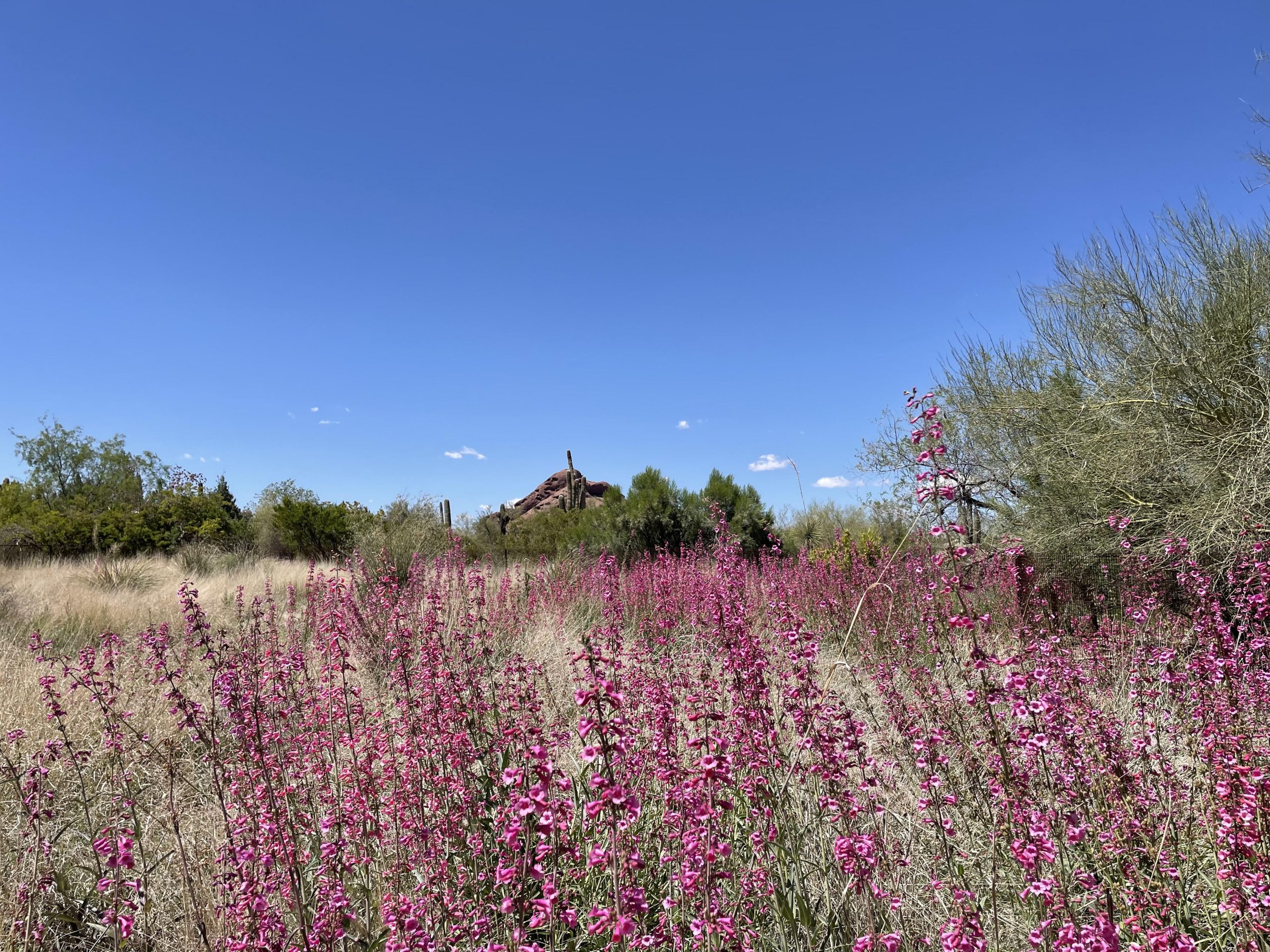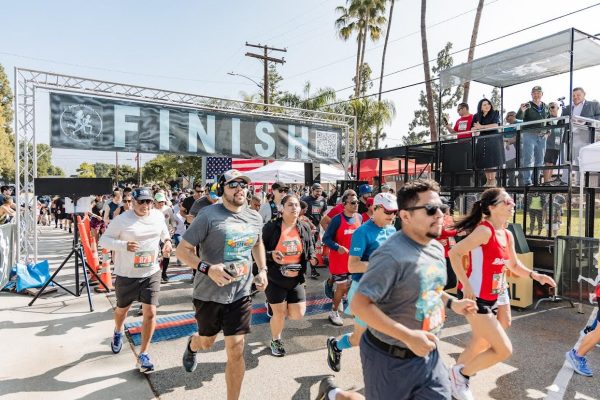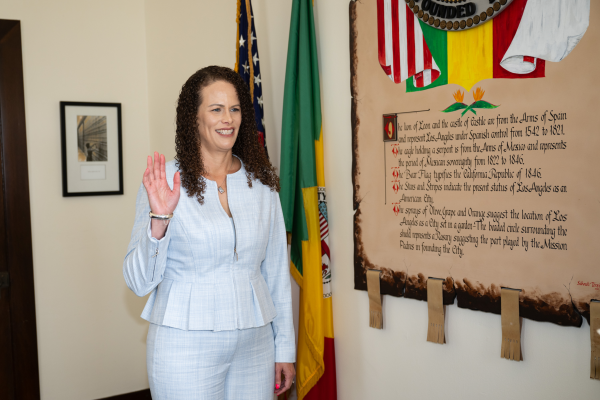It had been five years since I traveled out of the country so when I got an invitation to attend a wedding in Scottsdale, I gladly accepted. Located in Phoenix’s metropolitan area, Scottsdale was founded in 1894 by retired U.S. Army chaplain Winfield Scott and was incorporated in 1951 with a population of 2,000. While it’s only in a neighboring state, it nonetheless offers a change of atmosphere and scenery.
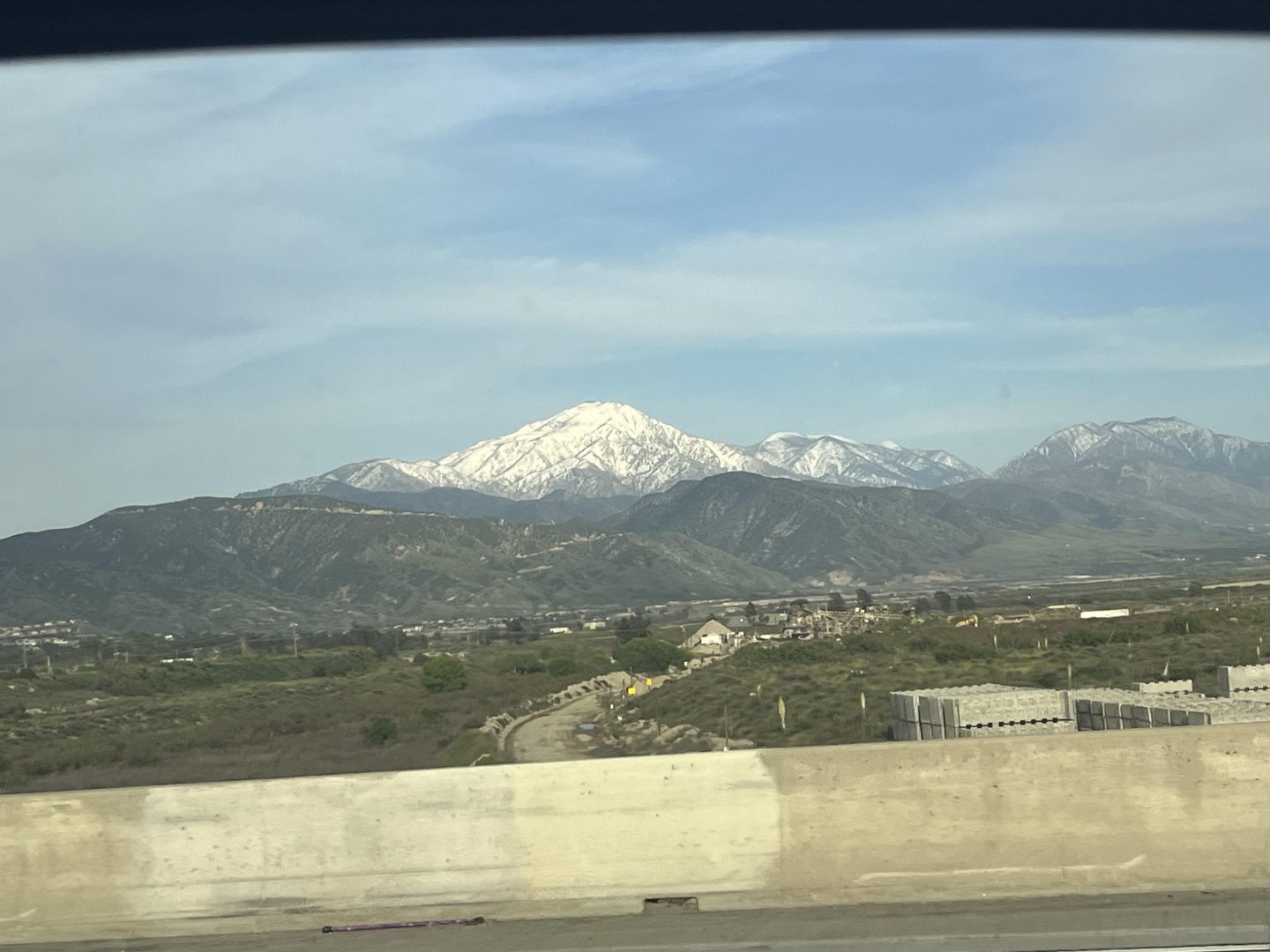
Excited to take a long road trip, my daughter, her husband, and I set out from Pasadena on a pleasant Thursday morning in April to spend a long weekend discovering Scottsdale. The majestic snow-capped San Gabriel Mountains along the 210 and 10 freeways were a sight to behold! As we got past Palm Springs to the other desert cities and the freeway became a two-lane thoroughfare, we were struck with how vast California is – there’s so much land and empty space!
The freeway turned into a four-lane road when we reached Buckeye, and we were right in the midst of the evening rush. The big rigs that shared the road with us the last few hundred miles were soon lost with all the other cars driven by people trying to get home after a long workday. While the freeway was crowded, traffic was moving at a moderately fast speed and we soon arrived at our destination – Scottsdale.
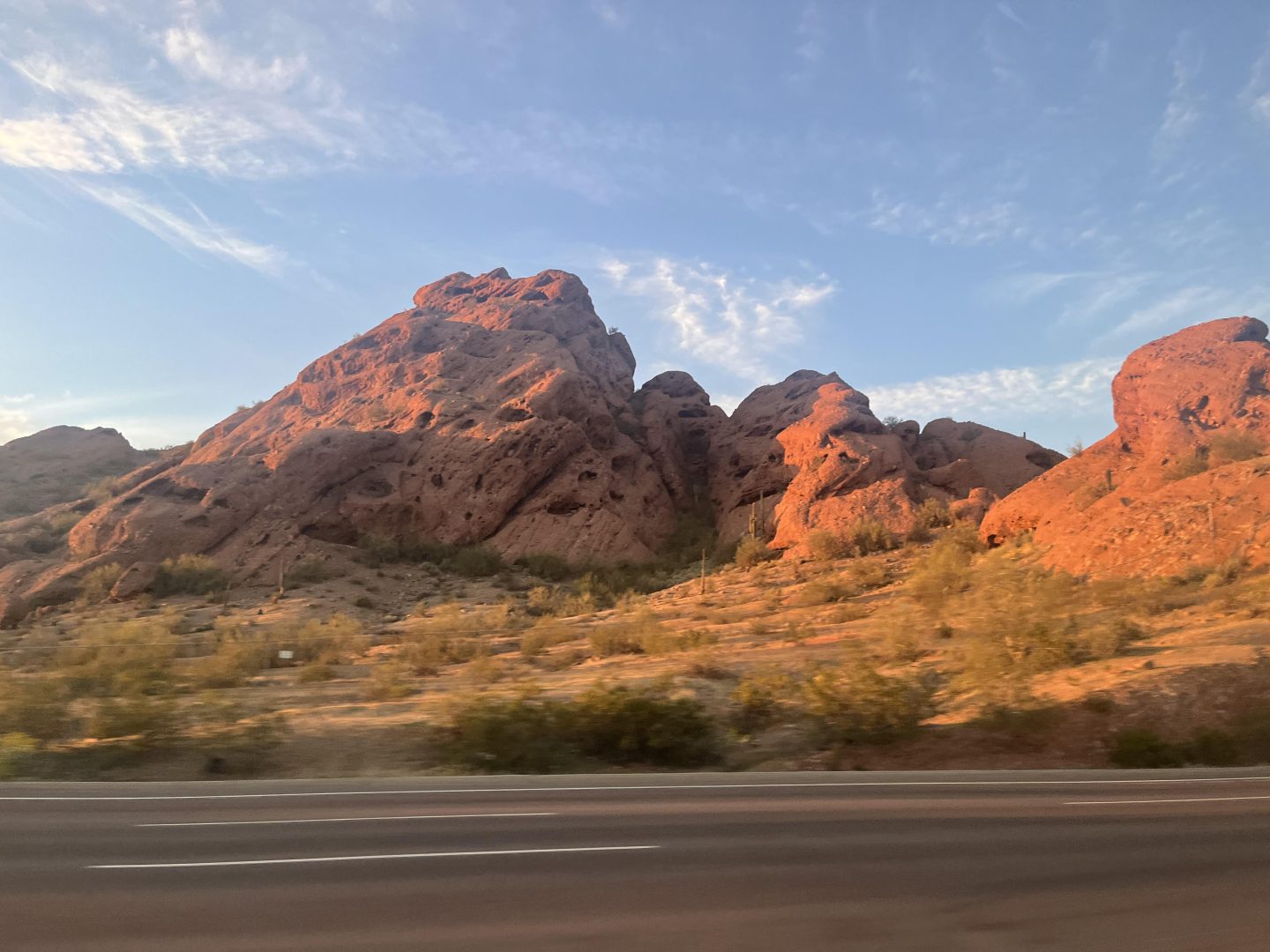
We checked in at The Scott Resort & Spa, a boutique hotel that’s independently owned and managed. Intentionally eschewing cookie-cutter lodging chains with no distinct personality, we were thrilled that the bride and groom chose it as their wedding venue. I learned that it used to be the Firesky Resort & Spa and went through a major renovation when Marc & Rose Hospitality acquired it. The hotel retained the property’s existing Spanish Revival architecture but injected a Bauhaus vibe for a hip and modern ambience. It seems to attract a young crowd – millennials and Gen Zs enjoying a night out about town. I noticed a majority of staying guests were couples instead of families.

A narrow bench next to the entrance doors is set up as a sideboard, laden with two large glass jars of cold water and iced tea to quench guests’ thirst when they arrive or as they head out. The expansive lobby has separate seating areas dotted with rattan chairs and semi-upholstered couches. Long coffee tables invite guests to linger and enjoy a game of backgammon or chess. There are several potted plants and abundant greenery everywhere. The back hallway opens out into a center patio and pool area that guests navigate to get to their rooms which are housed in a separate two-story building. The suites and rooms – which have private patios and balconies – are simply appointed with warm wood furniture and old world bronze, conveying a luxurious Sonoran style.
I had prepared an itinerary for our little adventure so I was saddened that we had to miss the first item on it – the Art District’s Thursday Night Artwalk. After our long drive we were simply too tired. So we got settled in our rooms and shortly after met downstairs at the hotel’s Canal Club for dinner. The restaurant is dimly lit, quite intimate and cozy, and we enjoyed a delicious meal. While the food weren’t exceptional, they were better than standard hotel fare and were prepared using fresh local harvest.
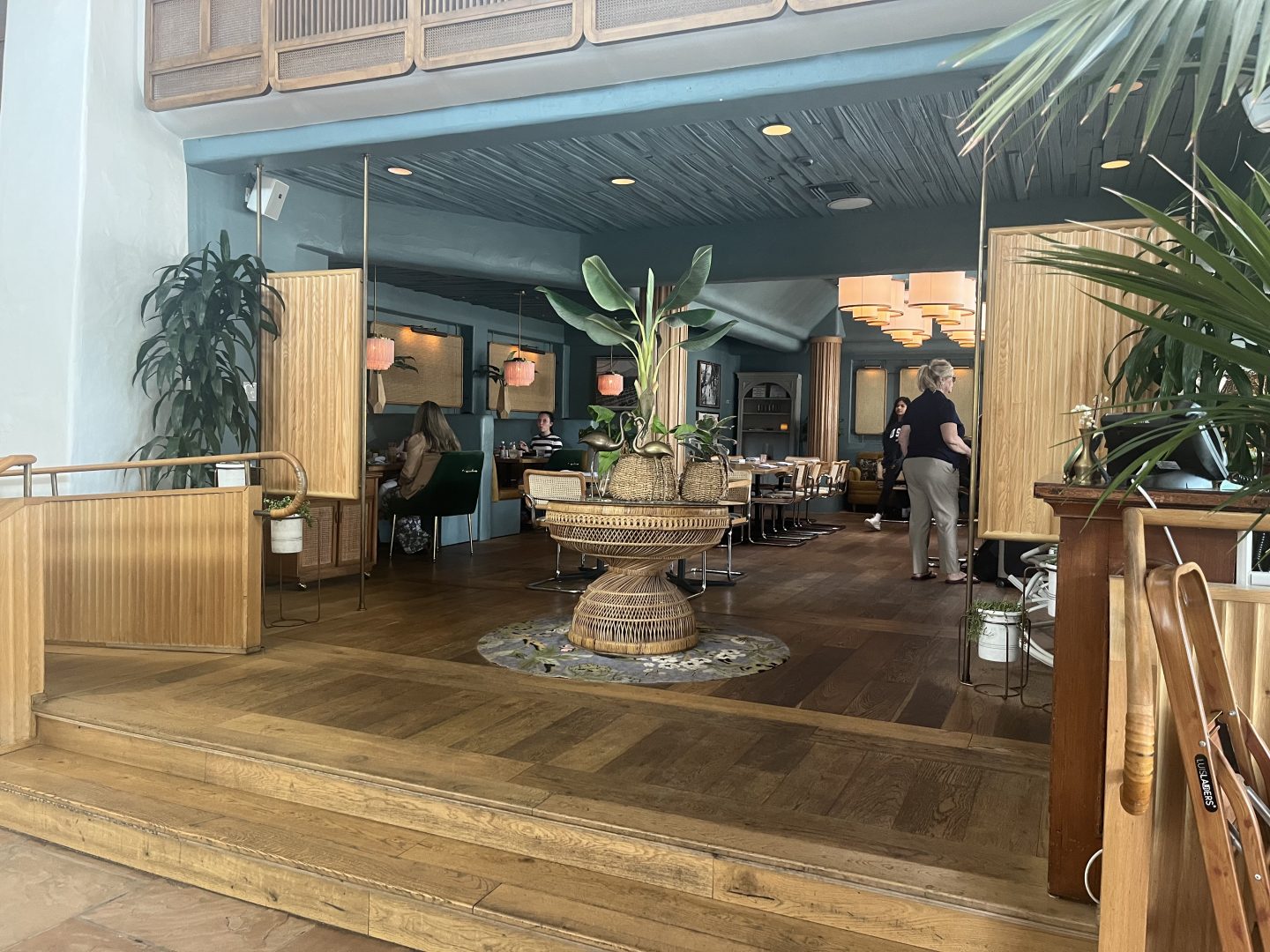
After a restful night, we ate a hearty breakfast at the Canal Club and were ready to see Scottsdale’s Old Town. However, we were delayed when family we hadn’t seen in a while stopped by our table. An hour later than planned, we headed out. We took advantage of the complimentary shuttle service The Scott offers. Logan, a very enthusiastic and upbeat young man (he looked like a high-schooler working there part-time and seemed to get even younger the more we saw him), drove us half a mile away and dropped us off at what he referred to as P.F. Chang loop at the Waterfront District. I found out afterwards that the P.F. Chang restaurant chain, which I always thought originated in L.A., first opened in Scottsdale.
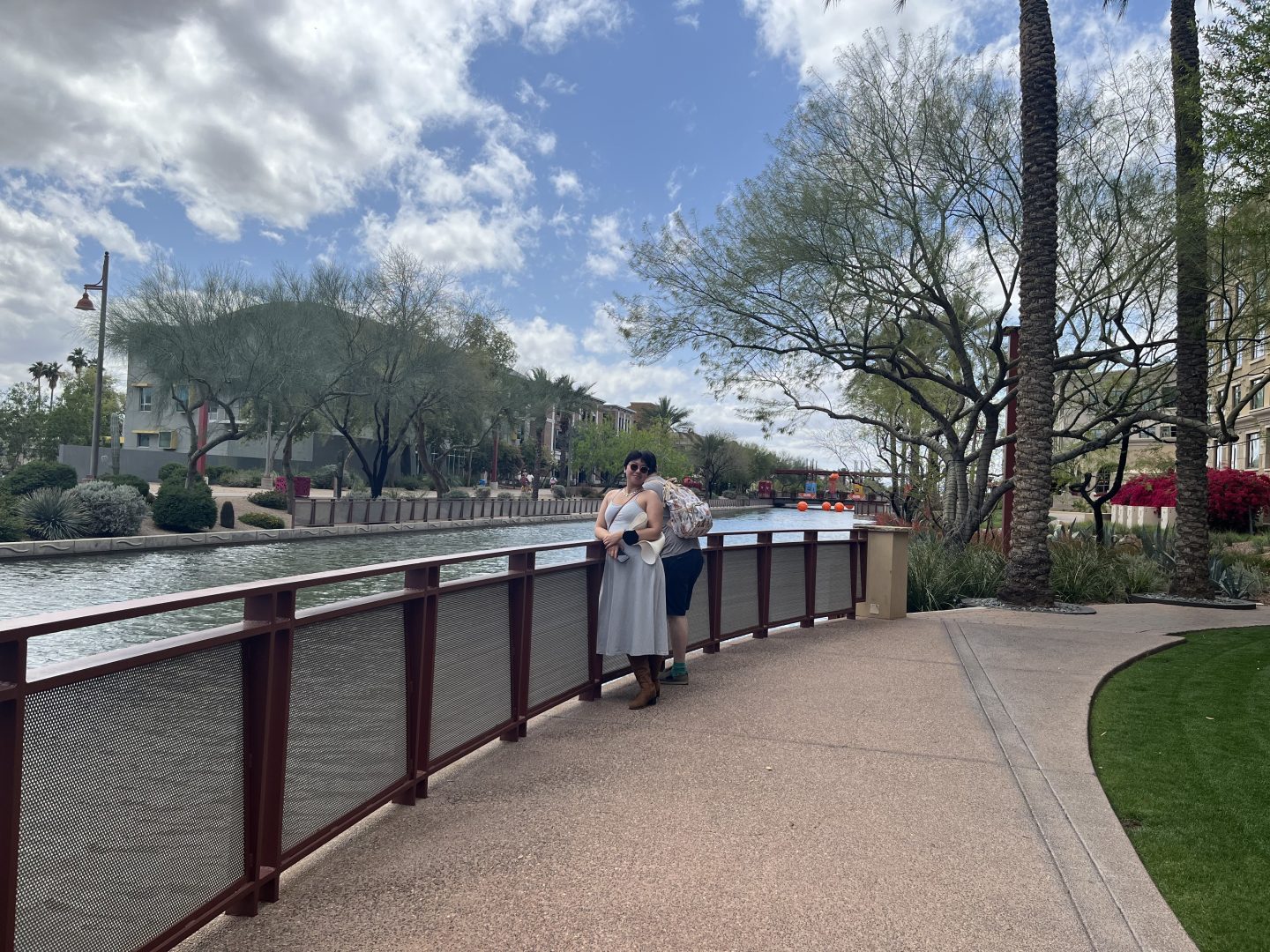
Old Town Scottsdale, an area that’s a little over one square-mile, is vibrant and alive with several art galleries, museums, restaurants, Southwestern storefronts, public art installations, and landmarks. It was named after Winfield Scott, who in 1888 bought 640 acres of Sonoran desert farmland and turned it into what is now a bustling district that honors and memorializes Scottsdale’s storied past.
We took a leisurely walk at Solstice Park where the Soleri Bridge and Plaza are located. A pioneer of mid-century architecture, Paolo Soleri lived in Scottsdale from 1955 until his death in 2013. He was fascinated by the movement of the earth around the sun and how the sun’s position in the sky could be utilized for natural climate control. So he envisioned a bridge that is more than a passageway and connection between one side of the canal to the other; he positioned it like a sundial that synchronizes with the sun on winter and summer solstices. According to a knowledgeable staffer at the Scottsdale tourist center, it is the only bridge ever erected out of over 100 that he designed in his lifetime.
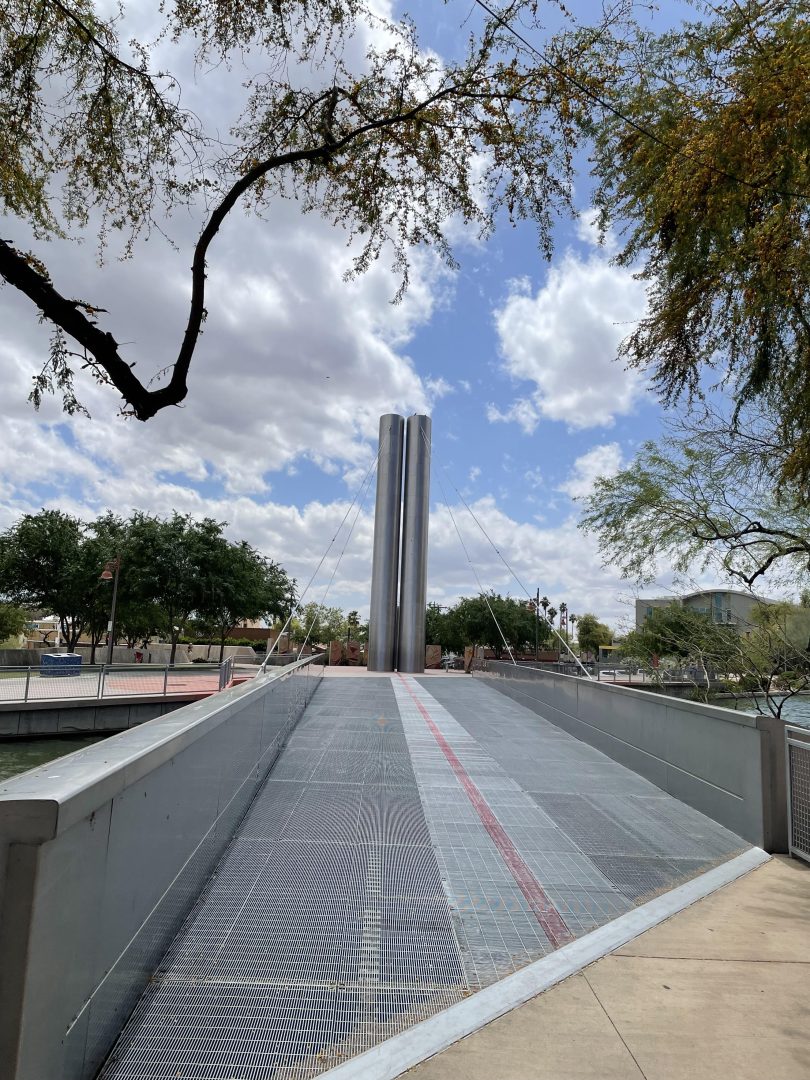
Soleri’s “Goldwater Bell” assembly, named after the Goldwater Store in Scottsdale where it previously hung, is a towering structure at Solstice Park. It was constructed entirely by Paolo Soleri at Cosanti – his former residence, gallery, and studio which is now an Arizona Historic site – and reflects his life’s work in architecture and ecology. The bell was part of his first U.S. retrospective at the Corcoran Gallery in Washington, D.C.

Some notable Old Town landmarks include the Little Red Schoolhouse which was built in 1909 for $4,500 and is now home to the Scottsdale Historical Museum; Old Adobe Mission on the southeast corner of First and Brown Avenue, constructed in 1933 of 14,000 adobe blocks made on site, which functioned as Scottsdale’s only Catholic Church for many residents; Cavalliere’s Blacksmith Shop, the first blacksmith shop which opened in 1910 and is still owned and operated by the Cavalliere family; and Sugar Bowl Ice Cream Parlor, a converted Western Auto Service shop, which serves treats and American food.
This wouldn’t be the Southwest without taverns and Old Town doesn’t disappoint. Rusty Spur Saloon, once Farmer’s State Bank of Scottsdale which opened on Main Street in 1921 and closed during the Depression, now holds liquor instead of U.S. currency; Porters Western Saloon, housed in what used to be Scottsdale’s first post office from 1929 to 1949, still has the familiar brick walls and crystal chandeliers but its staff has traded selling stamps for craft cocktails like the Sonoran Sunset and Postmaster.

Old Town’s popular attractions include Scottsdale Artists’ School, the Museum of Contemporary Art, the Center for the Performing Arts, Museum of the West, Fashion Square, and Scottsdale Stadium – home base for the San Francisco Giants during the Cactus League Spring Training.
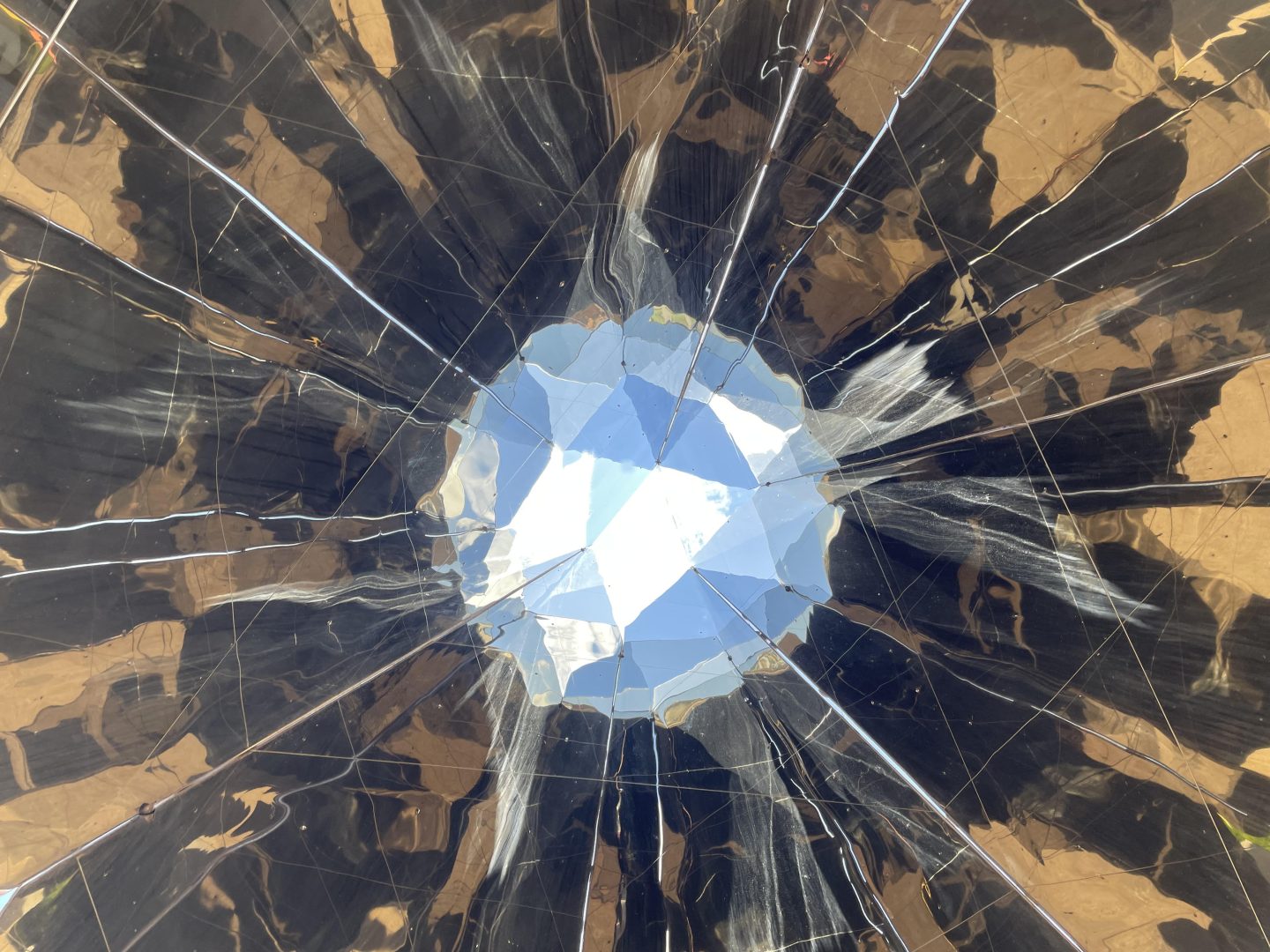
Public art installations abound in Old Town. Donald Lipski’s colossal work called “The Doors” – 28-foot-tall mirrored panels – invites people to experience what it’s like to stand inside a kaleidoscope. Louise Nevelson’s “Windows to the West,” dedicated in 1973, is the artist’s first large-scale work in the Southwest. James Turrell’s “Knight Rise” is a “skyspace” installation that frames the sky as pure color and displays the changing light of day. Robert Indiana’s “Love” sculpture, conceived when America was consumed by the Vietnam War, is a symbol for peace. John Randall Nelson’s “One-Eyed Jack,” a 26-foot-tall painted sculpture inspired by the legendary desert “jackalope,” bounded into Old Town in 2018.
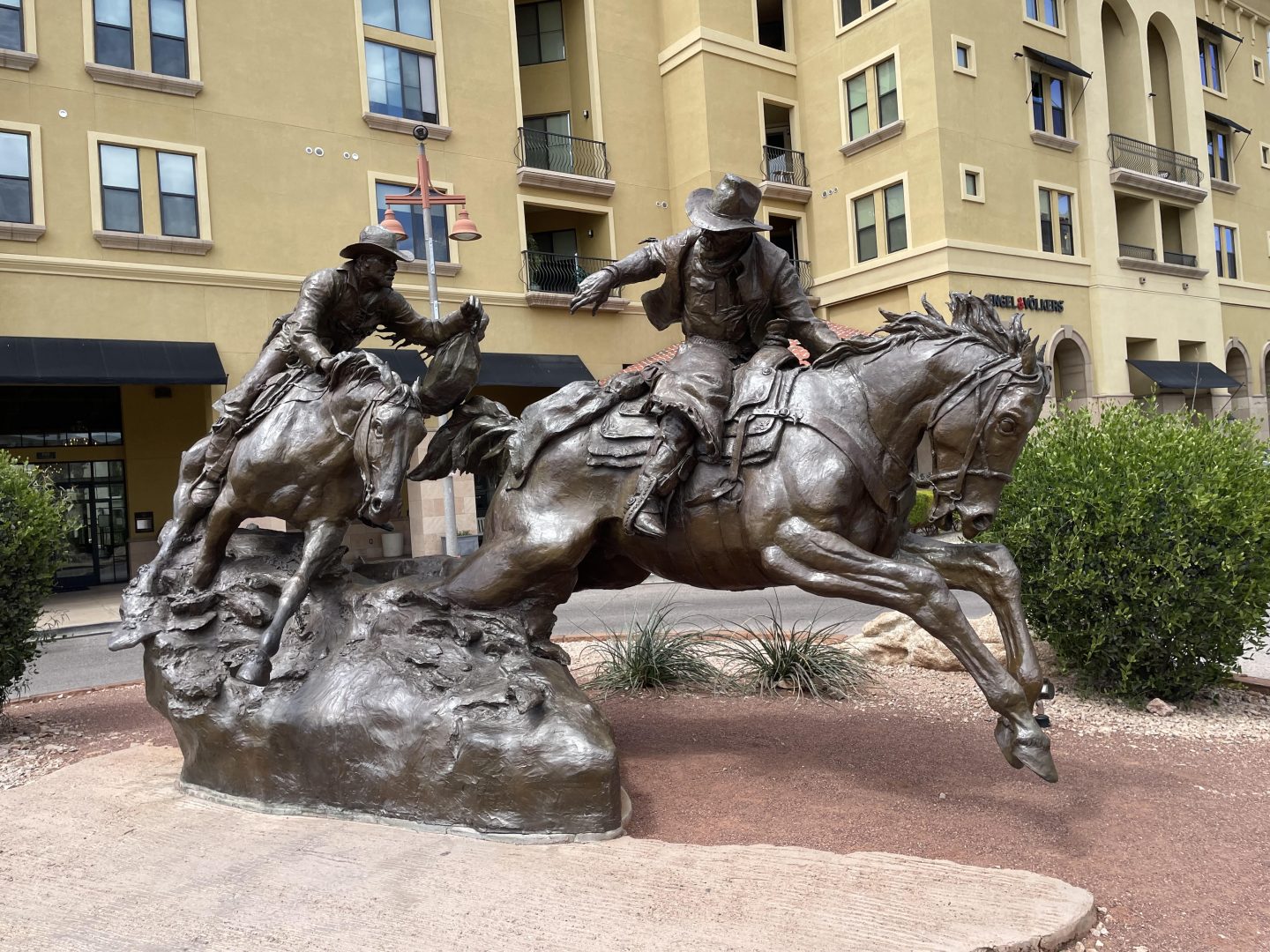
Impressive horse-themed sculptures reflect the city’s history. Herb Mignery’s “Passing the Legacy,” a life-size bronze, portrays a vintage Pony Express rider and a contemporary Hashknife Pony Express rider handing off the mail depicting the Old West meeting the New West. Ed Mell’s “Jack Knife,” a massive bronze of a bucking bronco, is a nod to Scottsdale western heritage and is the city’s official seal. George-Ann Tognoni’s “The Yearlings,” three bronze yearlings galloping full stride, is a monument to wild horses and an icon of the free spirit of the American West.
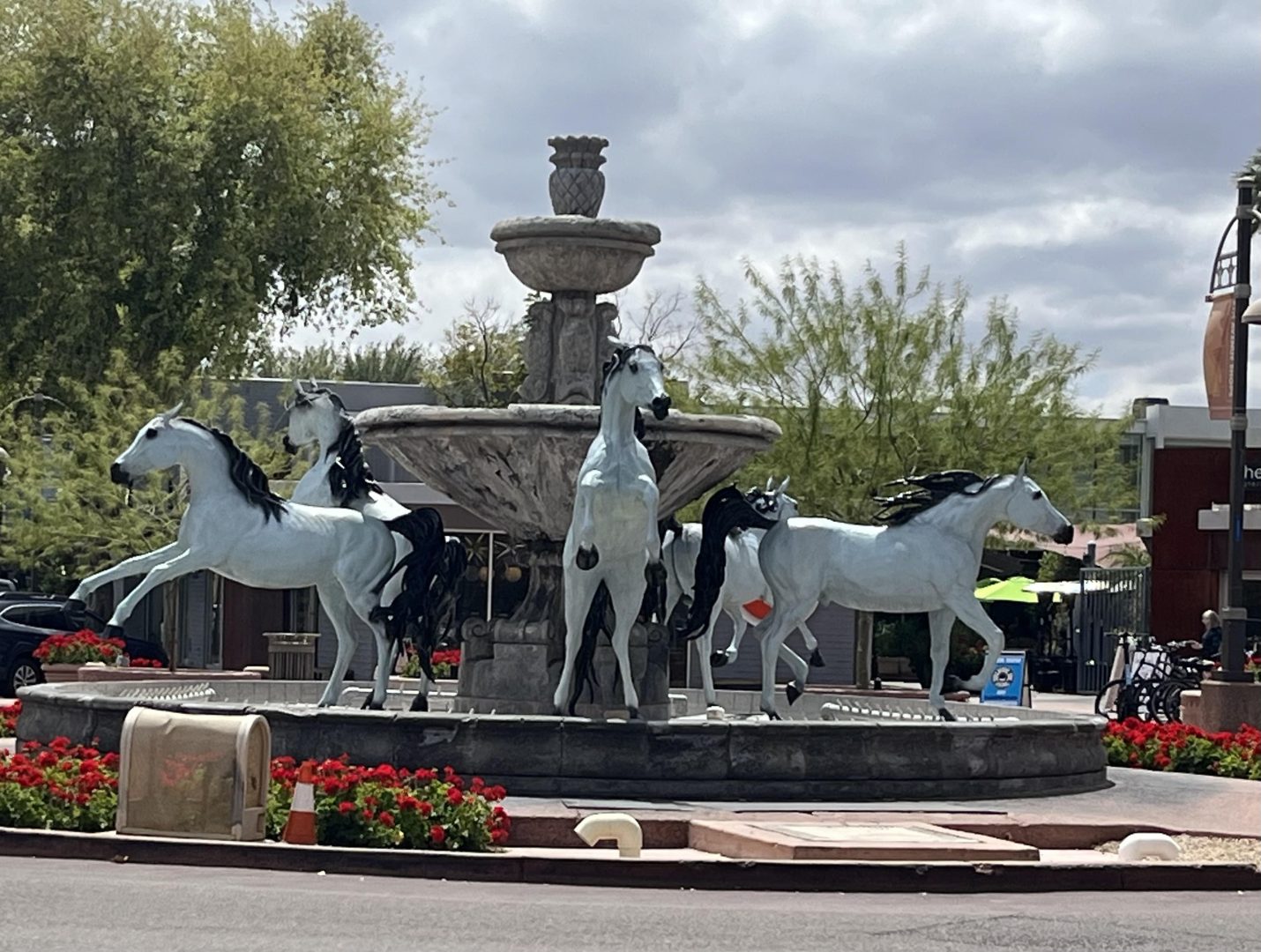
In the center of the Fifth Avenue/Marshall Way roundabout is the famous Bob Parks Horse Fountain, which was donated by artist and gallery owner Bob Parks in 1989 in an effort to attract visitors to the area. Leaping from the fountain are five champion Arabian horses sculpted after horse breeder Tom Chauncey’s award-winning Arabians. It’s a fitting homage to Scottsdale’s legacy as the center of Arabian horse breeding in America.
Fashion Square beckoned to us and off we went to discover what stores are within. Occupying this magnificent building are purveyors of designer apparels, fashionable accessories, and luxury goods, like Gucci, Louis Vuitton, and Rolex; renowned restaurants, including Nobu, Ocean 44, and Francine; and popular anchor stores Neiman Marcus, Nordstrom, Macy’s and Dillard’s. Caesars Republic Scottsdale, the 11-story first non-gaming hotel from Caesars Entertainment, is adjacent to it.
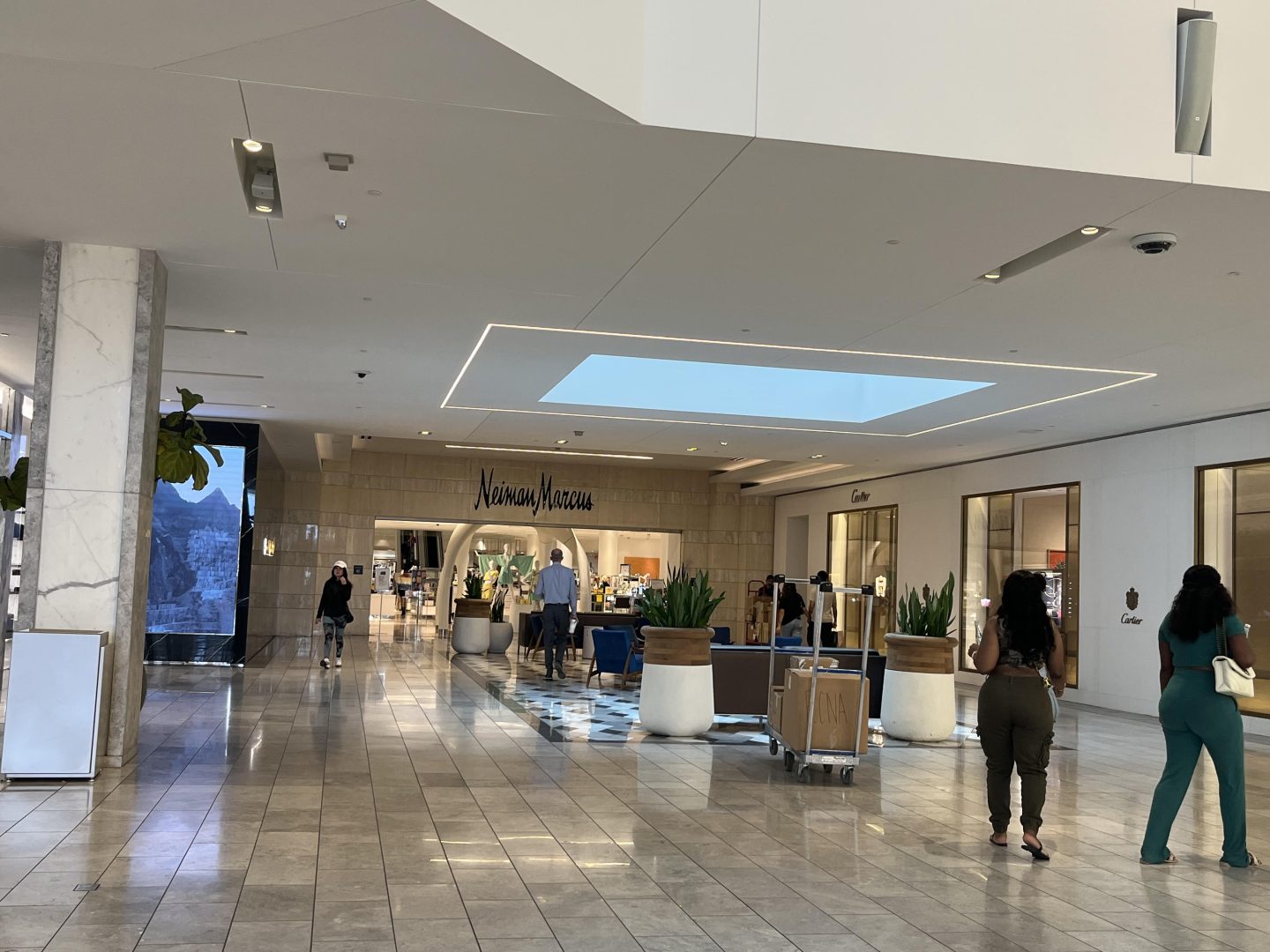
After we had our fill of window-shopping, we got a hankering for a snack so we ambled to Jeni’s for ice cream. It was no surprise that the place was packed – their frozen treats were decadently delicious!
The Scott’s shuttle service took us back to the hotel after 3 p.m.; we barely had time to freshen up and change for the 4 p.m. wedding. The sun was shining, the temperature pleasant and cool, when big raindrops suddenly started falling right at 4 p.m.. We watched in amazement as a parade of hotel staff deftly carried bouquets and flower arrangements indoors. It is a testament to their efficiency that the wedding ceremony transpired at 4:30 p.m. in an alternate venue. It was quite lovely! The dinner and dance reception that followed was very delightful.

The following morning we took the shuttle service and went to Old Town once more in search of food. There was a long wait at both the Breakfast Club and The Montauk but we found a place called Schmooze for breakfast and got outdoor seating at their patio that’s filled with gorgeous flowering plants and vines.
Fully sated, we called the hotel’s trusty shuttle service to deposit us back at our lodgings and then we drove to the botanical garden.
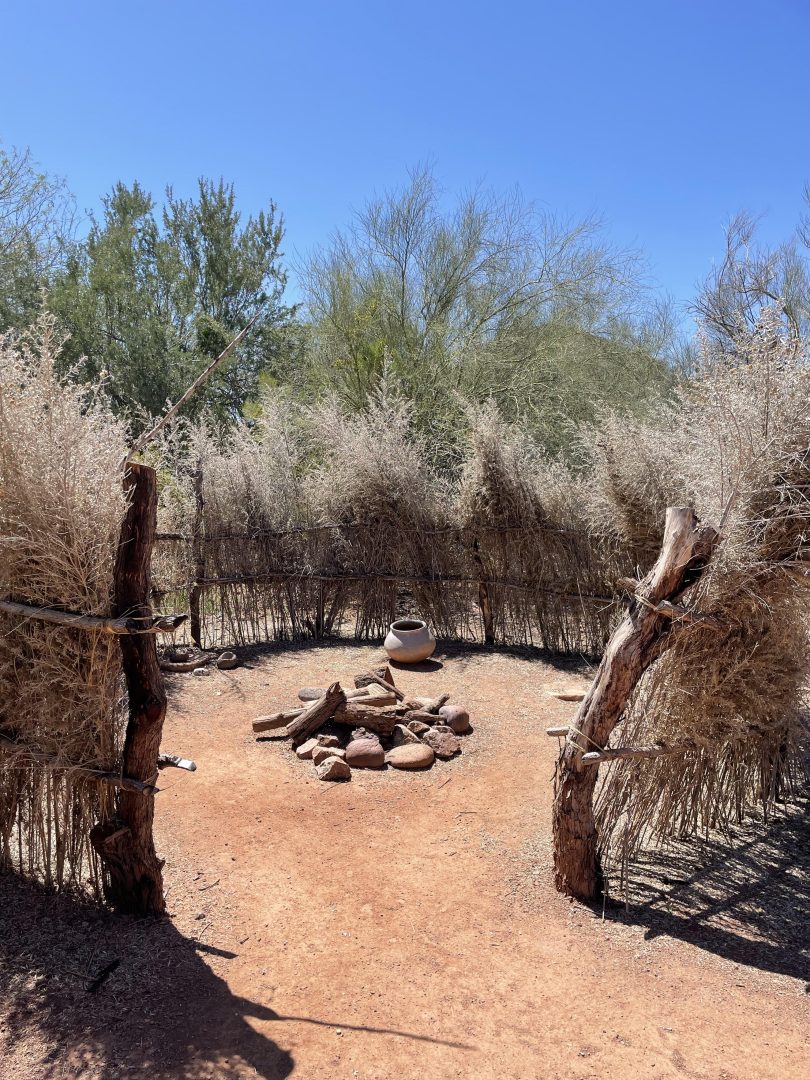
Celebrating its 85th anniversary, the Desert Botanical Garden boasts five trails – four of which are about a third of a mile – to stroll in. We wandered on the Discovery Trail, which features a wide variety of cacti and succulents as well as historic plant collections. Along the Harriet K. Maxwell Desert Wildflower Trail, we meandered through vibrant blooms and came upon bees, butterflies, hummingbirds, and other pollinators that play important roles in thriving desert ecosystems. On the Center for Desert Living Trail, the shortest stretch at one-tenth of a mile, we discovered fragrant herbs, vegetable beds, and shady spots to relax in. We found out how plants and animals survive on the Sonoran Desert Nature Trail. Along the Plants & People of the Sonoran Desert Trail, we walked through five different desert habitats and learned how indigenous people have used native plants for food, fiber, and shelter.
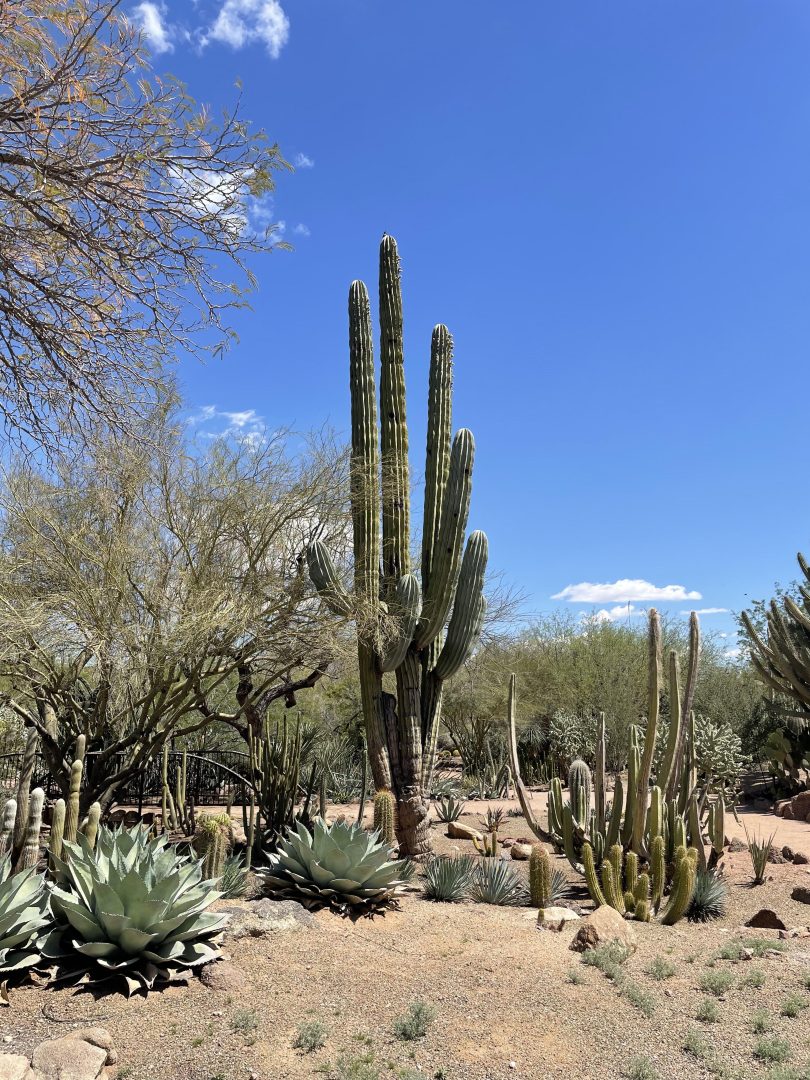
Later in the afternoon we took in Western Spirit: Scottsdale’s Museum of the West in Old Town. Built on what was once the Loloma Transit Station, the two-story museum showcases the art, culture, and history of 19 states in the American West, Western Canada, and Mexico. The 43,000 square-foot museum opened in January 2015 – the realization of Herb Drinkwater’s dream who served as Scottsdale mayor from 1980 to 1996.
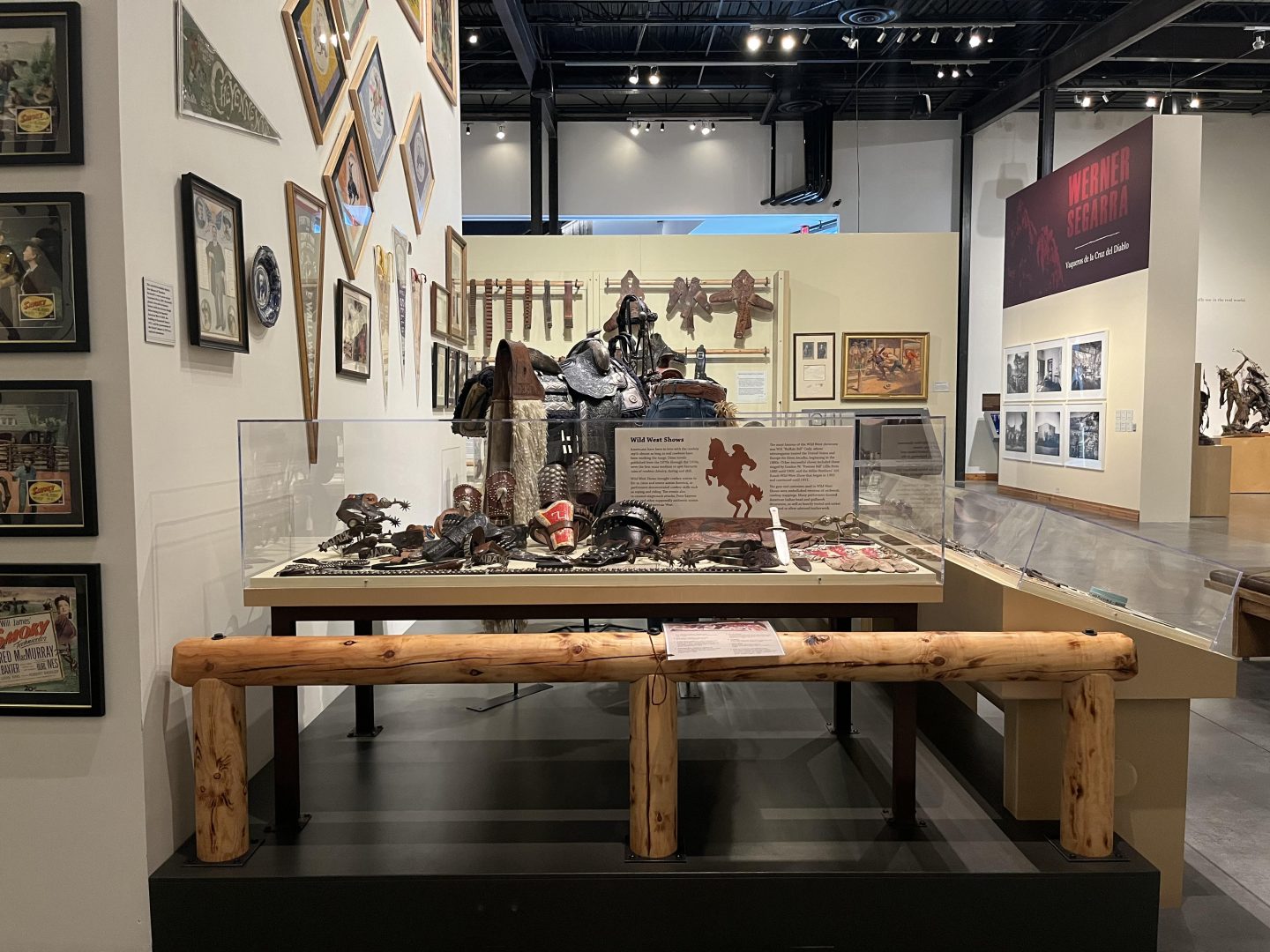
Within the compact space are enlightening current exhibitions and permanent presentations. Inner Light: The Art of Tom Gilleon, a 70-year painting career retrospective featuring 12 oil paintings on loan from Walt Disney Imagineering, is showing until Aug. 25, 2024 On view through October 2024 are the William Matthews’s plein air watercolors, and other mediums – album covers, murals, and ephemera that demonstrate his contributions in global art. The works of Warner Segarra, a Puerto Rican of German descent, is on view until May 19, 2024: a collection of photographs captured over 30 years shows the world of vaqueros.
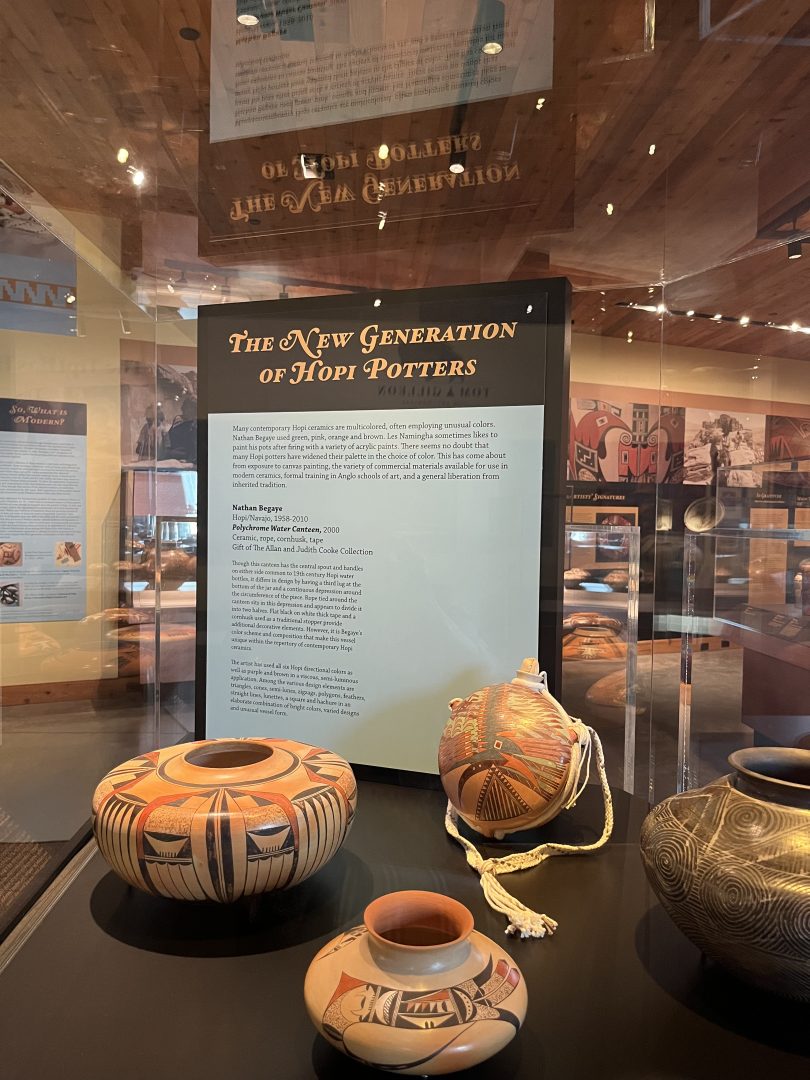
We marveled at the numerous ongoing displays that tell stories of the American West – Rails Building America, an exploration of the transformative power of railroads in shaping the Southwest; The A.P. Hays Spirit of the West Collection, an assortment of revolvers, rifles, saddles, knives, holsters, chaps, badges, and more; Dazzling Array: The Richard A. Gates Collection of Native American Jewelry; Courage & Crossroads: A Visual Journey through the American West; Canvas of Clay: Hopi Pottery Masterworks from the Allan and Judith Cooke Collection; Collecting Stories: John Coleman Bronzes from the Collection of Frankie and Howard Alper.
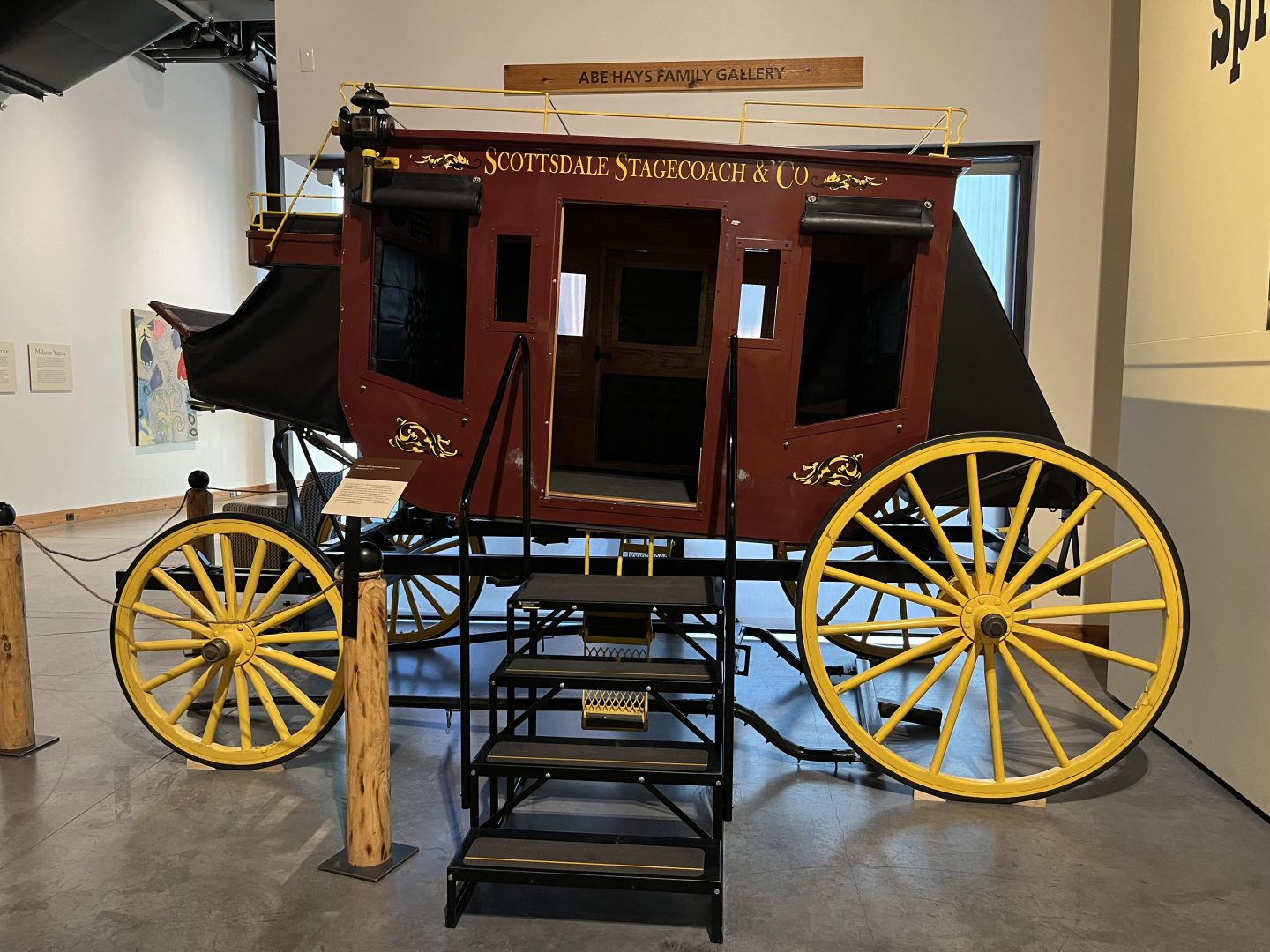
A museum staffer announced we had ten minutes to complete our tour before closing time so we headed downstairs. We got back to the hotel, started packing for our drive home the next day, and made plans for dinner. As it was Saturday evening, restaurants were crowded and fully booked. We lucked out with Farm & Craft, a trendy but casual place known for healthy and sustainable food and fun cocktail concoctions. They even have a good selection of fruit-infused teas which I happily sampled. We had a delightful meal served by their pleasant and attentive staff. Having been told there’s a separate stomach for dessert, we walked to Jeni’s after dinner to once again indulge in their delicious ice cream.
On Sunday morning we ate a hearty brunch and did a final check of our rooms. The ever eager and helpful Logan took our luggage out to our car. It had been a fabulous long weekend – we had the best time in this gloriously picturesque city! But, alas, our adventure was at an end. Goodbye, Scottsdale!

